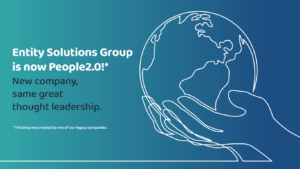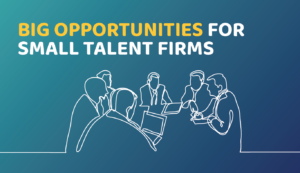Being an employee in the present day is quite different from what it was just a few decades ago. In fact, some of us are not even employees anymore, but prefer the more flexible life of a contractor. Workplaces are becoming more diverse, and the strict 9 to 5 working hours no longer apply to an increasingly connected workforce. Singapore is a bustling business hub, attracting the cream of the international talent crop but we also need to incentivise the best of our local talent to stay put and help shape the economy for the digital era. Here are the latest workforce trends in Singapore that all local businesses need to be aware of, as we move into the New World of Work.
Skills and Talent
Singapore’s demographic shifts
Singapore’s demographic has begun a shift that will change society. Our ageing population is said to be on its way to doubling by 2030, and the number of work aged citizens (aged 20-64) will be reduced, meaning that we could have a shortage of talent in the near future. In order to maintain the economy, it is important for Singapore to embrace more flexible work practices, making the workforce more attractive to parents and older workers so that they stay in the workforce as long as possible.
It is not uncommon to have at least three (and up to five) generations working together in the modern workplace. However, it is the Millennials and Generation Z workers who are redefining the way things are done and it is inevitable that these groups will dominate the workforce.
These generations are known to place value on different aspects of their working life than the generations before them. They want the freedom to gain experience in a variety of roles and at several firms over the course of their careers, as well as flexibility to have work/life balance. With the needs and desires of the Singaporean workforce inevitably changing, in order to stay competitive and to attract and retain talent, organisations need to reassess their offering to employees.
Attraction and retention
Thanks to increasing worker mobility and the rise of the global marketplace, there are more opportunities than ever for the young and ambitious. Businesses are seeing a marked change in talent’s ideals and are scrambling to put in place retention strategies for their contingent workforce that can encourage professionals to stay on for the next contract.
Organisations are discovering that Millennials don’t just want a stable job -they’re looking for opportunities for growth, flexibility and a cause they care about. The savviest organisations are able to adjust their retention strategies to help young professionals find meaning and satisfaction in their work.
Place
International Mobility programmes
Workers are much more mobile than before, and relocating to another city or even another country is now a common career move. Businesses are realising the need to groom talented individuals with international experience, and mobility programmes that enable workers to gain global exposure are becoming increasingly popular.
Mobility in the financial services sector is extremely common. For instance, Credit Suisse are great proponents of internal mobility, and employees are encouraged to apply for positions in other regional offices. In 2014, 4,600 of their employees made an internal move, while 42% of their global vacancies were filled through internal transfers.
Virtual workforce
According to a recent Microsoft study, Singapore ranked 9th in the Asia Pacific region with regard to access to productivity tools. 47% of Singaporean respondents reported the use of 4-5 productivity tools (email, social media, collaboration tools, virtual meetings, etc) in their current positions. The study showed that 67% of workers in Singapore consider themselves to be “mobile workers”.
Whilst ideas about work, and how it fits into life, are changing all over the world, it seems that these changes in mindset are challenging even Singapore’s traditional beliefs on the subject. Of the respondents, 46% of Singaporeans reported using more personal devices to get work done. 54% are also using other file sharing tools, rather than simply responding to email outside of work hours.
Casualisation in the workforce
Working the traditional 40 hour week is no longer standard protocol in many professional businesses. In Singapore, there has been a strong push to encourage women to re-enter the workforce after having children, which has meant that many organisations have had to adapt their policies on flexible work to allow women to balance family responsibilities with work. Organisations are engaging with workers in many ways, such as, permanent part-time, fixed-term contracts, casual employees, via recruitment agencies and as independent contractors.
While the advantages and disadvantages of such work arrangements can vary greatly depending on the circumstances, having access to flexible work options means that many parents and almost-retirees have been able to participate in the workforce again, which is great for the economy.
Technology
Technology has underpinned the evolution of the New World of Work.
With the right technology in place, businesses can ensure the success of flexible working. For an organisation wanting to offer remote working to talent, it is worthwhile investing in the right software for collaborative working and programs that will allow for the safe sharing of files and sensitive documents – particularly when working from personal devices.
As it stands, 52% of Singaporeans said they needed to be in the office to access special equipment or tools to complete their work tasks. Enabling workers to complete all of their tasks remotely would be very beneficial and may not be as difficult to navigate as you may think. For many tasks, it is possible to find a way around this by utilising software specially designed for remote work.
Not only has it assisted with the ability to work from anywhere, but with so many businesses undertaking digital transformation projects and the era of start ups we have seen the on demand workforce rise in popularity. It not only suits organisations for scalability but allows individuals to continually work on exciting and challenging projects.
Moving your organisation in the direction of the NWOW
Get your business ready for the New World of Work and unlock the benefits for your talent by building flexibility into your offering. Your future workforce will consist of mainly Millennials and Gen Zs, so a great way to optimise your attraction and retention strategies to suit these demographics is to ensure your organisation is utilising the latest productivity tools and allow talent to stay connected after work hours or work from home. Update your communication tools and introduce virtual meeting software, cloud email applications and file sharing software. Encourage the use of technology to bring people together to work collaboratively.
From the perspective of an organisation trying to navigate through tricky economic conditions, a contingent workforce can also be helpful to provide organisations with the option of flexibility. You can upscale or downscale as needed, whilst still being able to provide talent with the possibility of work-life balance as an attraction lever.
For more information about how your company can begin to address flexible working and talent attraction and retention policies, please contact Entity Solutions today.
Phone: +65 6532 2141 Email: enquiries@entitysolutions.com.sg
References:
1. http://www.hrinasia.com/employer-branding/microsoft-explores-the-new-world-of-work-trends-in-asia-pacific/
2. http://www.pwc.com/us/en/press-releases/2012/employee-mobility-programs.html
3. https://www.population.sg/population-trends/demographics

Infographic: Independent Contractor or Employee?
Discover basic differences between contractors and employees with People2.0’s infographic overview.


